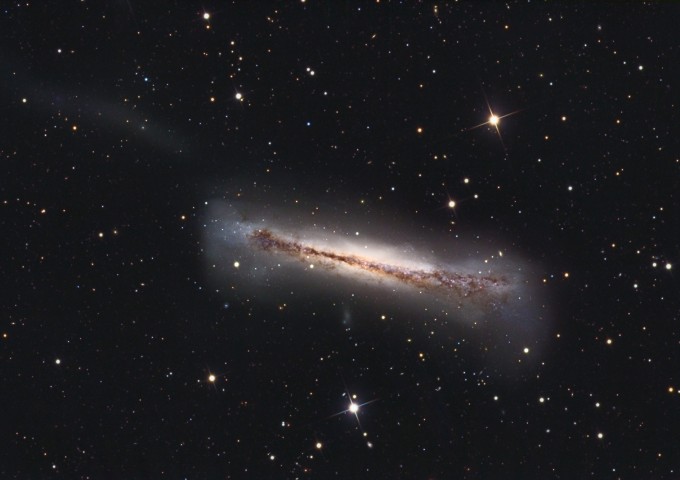Page 1 of 1
Sideways Galaxy NGC 3628
Posted: Fri Apr 08, 2005 3:13 pm
by Pete Roebber
Hello all, this is my first post to this group. I've been viewing APOD for a couple of years now but didn't know about this forum until I contacted Dr. Nemiroff with a question about his APOD post for NGC 3628. He referred me here. My question is as follows:
I wondered while looking at the photo if the smudge of starlight extending beneath the middle of NGC 3628 was another component of the galaxy not addressed in the description or if it was a background object, perhaps an elliptical galaxy. Can anyone shed any light on this question?
Thanks,
Pete Roebber
Posted: Tue Apr 12, 2005 10:41 am
by Orca

You'd have to know the distance of the smudge and compare it to the distance the galaxy. Without knowing that, the object could be a small satelite galaxy, like our Magellanic Clouds, or a large galaxy hundreds of thousands of light years more distant.
That's my 2 cents.

Re: Sideways Galaxy NGC 3628
Posted: Wed Apr 13, 2005 7:40 pm
by nbrosch
[quote="Pete Roebber"]Hello all, this is my first post to this group. I've been viewing APOD for a couple of years now but didn't know about this forum until I contacted Dr. Nemiroff with a question about his APOD post for NGC 3628. He referred me here. My question is as follows:
I wondered while looking at the photo if the smudge of starlight extending beneath the middle of NGC 3628 was another component of the galaxy not addressed in the description or if it was a background object, perhaps an elliptical galaxy. Can anyone shed any light on this question?
Thanks,
Pete Roebber[/quote]
There is no way to know whether this is a background galaxy or a small piece of N3628 thrown off during a violent encounter. However, and fortunately, this object has a redshift. It is 11392 km/sec (that of N3628 is 843 km/sec). This redshift difference would indicate to the majority of astronomers that the smudge is a background object. However, Dr. Halton Arp presented this object as a case of high velocity ejection from an active galactic nucleus, of N3628.
Noah Brosch
